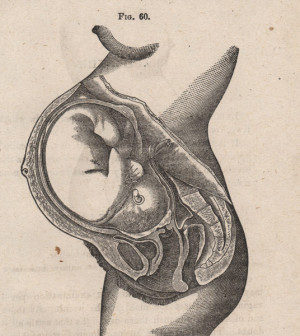- Navigating Your Midlife Crisis: Embracing New Possibilities
- City Raccoons Showing Signs of Domestication
- Mapping the Exposome: Science Broadens Focus to Environmental Disease Triggers
- One Week Less on Social Media Linked to Better Mental Health
- Your Brain Changes in Stages as You Age, Study Finds
- Some Suicide Victims Show No Typical Warning Signs, Study Finds
- ByHeart Formula Faces Lawsuits After Babies Sickened With Botulism
- Switch to Vegan Diet Could Cut Your Greenhouse Gas Emissions in Half
- Regular Bedtime Does Wonders for Blood Pressure
- Dining Alone Could Mean Worse Nutrition for Seniors
‘Laughing Gas’ May Not Ease Pain During Childbirth: Study

Most women who choose so-called laughing gas to control pain while giving birth eventually ask for an epidural anyway, a new study finds.
Laughing gas (nitrous oxide) is an inhaled anesthetic commonly used to manage labor pain in a number of countries. The gas reduces anxiety and makes patients less aware of pain, researchers said.
“Nitrous oxide is gaining interest among expectant mothers as an option to manage labor pain and is becoming more widely available in the United States,” said lead investigator Dr. Caitlin Sutton, an obstetric anesthesiology fellow at Stanford University School of Medicine in Palo Alto, Calif.
“However, we found that for the majority of patients, nitrous oxide does not prevent them from requesting an epidural. While nitrous oxide may be somewhat helpful, epidural anesthesia remains the most effective method for managing labor pain,” she added.
Epidural anesthesia is generally administered through a tube placed into the lower back, into the space below the spinal cord. It blocks pain in the lower part of the body so a woman can be awake and alert during delivery. It is the most common type of labor pain relief used in the United States, the study authors said.
In the study, the researchers reviewed the medical records of nearly 4,700 women who delivered vaginally at a U.S. obstetrics center between September 2014 and September 2015. Only 148 of the women chose nitrous oxide to manage their labor pain.
On average, the pain score immediately before receiving nitrous oxide was 8 on a scale from 0 to 10, and that score remained the same after receiving nitrous oxide. The average length of time that nitrous oxide was used was 80 minutes.
Sixty percent of the women who used nitrous oxide eventually decided to get an epidural anyway, according to the study.
The research was to be presented Monday at the annual meeting of the American Society of Anesthesiologists (ASA), in Chicago.
Further research is needed to determine which women would most benefit from nitrous oxide during labor, Sutton said.
“Knowing which patients are more likely to convert from nitrous oxide to an epidural can help physician anesthesiologists offer more individualized counseling to patients when they are in labor,” she explained in an ASA news release.
Research presented at medical meetings is considered preliminary until published in a peer-reviewed journal.
More information
The U.S. Office on Women’s Health has more about labor and birth.
Source: HealthDay
Copyright © 2025 HealthDay. All rights reserved.










